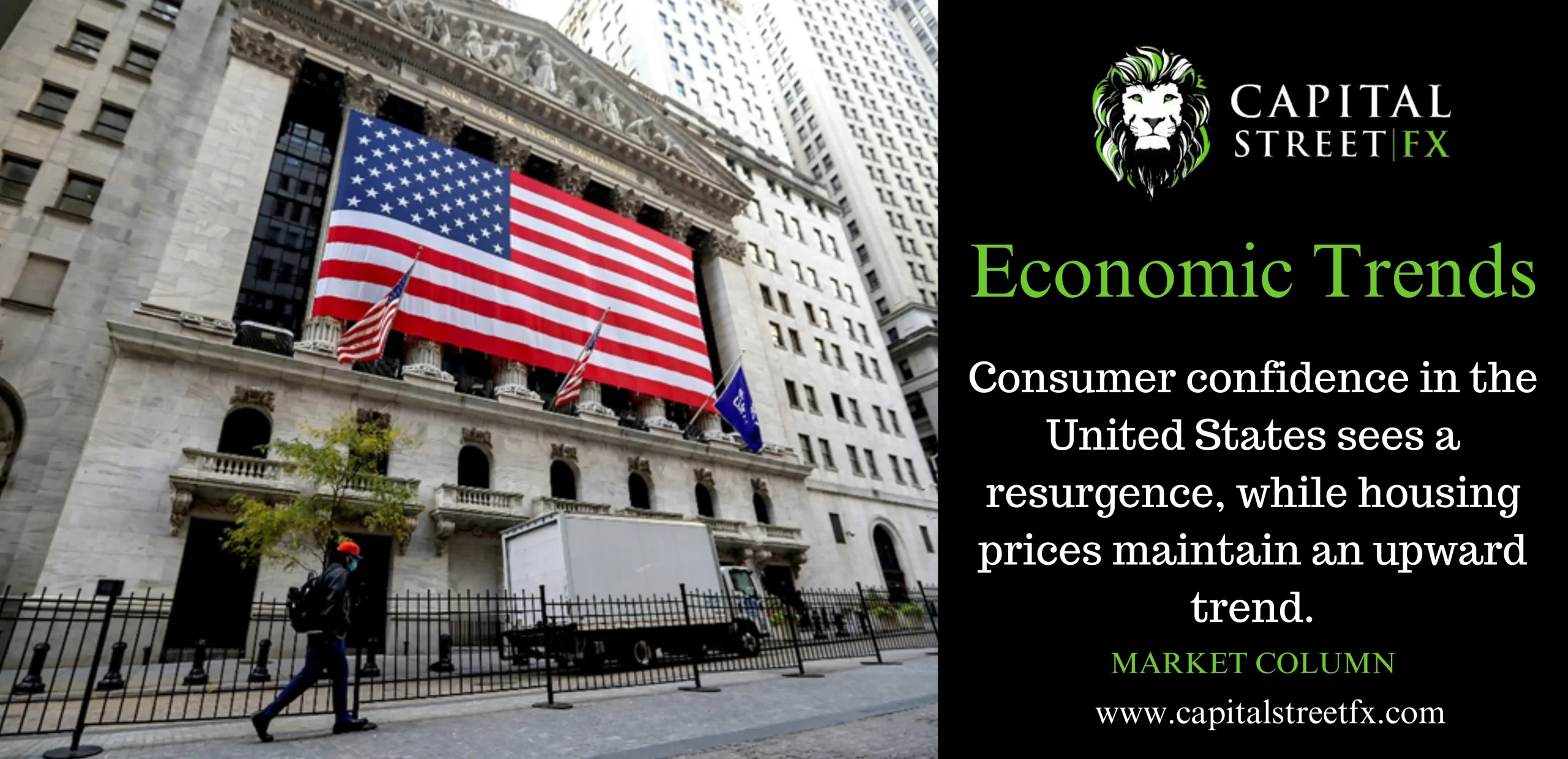Consumer confidence in the United States sees a resurgence, while housing prices maintain an upward trend.
In November, U.S. consumer confidence increased following three consecutive monthly declines, as Americans expressed intentions to make significant purchases such as motor vehicles and houses over the next six months. Despite ongoing concerns about higher prices and interest rates, the rebound in confidence suggests a continued willingness to engage in substantial expenditures.
Despite the uptick in confidence, primarily fuelled by heightened expectations, the latest survey from the Conference Board, released on Tuesday, reveals that approximately two-thirds of surveyed consumers still consider a recession “somewhat” or “very likely” to occur within the next year.
However, most economists are not predicting a recession but rather a phase of very sluggish growth. This outlook gained support from recent data favoring lower inflation, such as a slowdown in job gains in October. This trend has led financial markets to believe that the Federal Reserve has likely completed its cycle of interest rate hikes.
“In essence, this data aligns with the concept of current slower growth but hints at the likelihood of ongoing growth into the next year,” stated Brad McMillan, Chief Investment Officer at Commonwealth Financial Network in Waltham, Massachusetts.
The consumer confidence index of the Conference Board rose to 102.0 this month, marking an increase from the downwardly revised figure of 99.1 in October. Economists surveyed by Reuters had anticipated a decline to 101.0. Notably, the enhanced confidence was predominantly observed among households aged 55 and above, while consumers in the 35-54 age group expressed less optimism about their future prospects.
The present situation index of the survey, derived from consumers’ evaluations of current business and labor market conditions, slightly declined from 138.6 in October to 138.2. In contrast, the expectations index, reflecting consumers’ short-term outlook for income, business, and labor market conditions, increased from 72.7 to 77.8.
It stays beneath 80, a threshold historically linked to the likelihood of a recession within the upcoming year.
“Improvements were evident across a range of income groups,” noted Dana Peterson, Chief Economist at the Conference Board. “Nevertheless, written responses disclosed that consumers are still concerned about rising prices in general, followed by worries about war/conflicts and higher interest rates.”
Consumer expectations for 12-month inflation decreased from 5.9% in October to 5.7%, likely influenced by reports indicating a decline in inflation for October. This development is positive for the U.S. central bank, particularly following the University of Michigan’s consumer survey last week, which revealed a rise in long-term inflation expectations in November to levels not seen since 2011.
In the Conference Board survey, the percentage of consumers anticipating higher interest rates is at its lowest since April 2021, while those expecting lower borrowing costs is at its highest in nearly three years. With the diminishing inflationary pressures, financial markets are now foreseeing a rate cut from the Fed around mid-2024, as indicated by CME Group’s (NASDAQ: CME) Fed Watch Tool.
Those projections received a lift from statements made by Fed Governor Christopher Waller on Tuesday, suggesting that “if we observe disinflation persisting for several more months … there could be a consideration to initiate a reduction in the policy rate solely due to lower inflation.”

